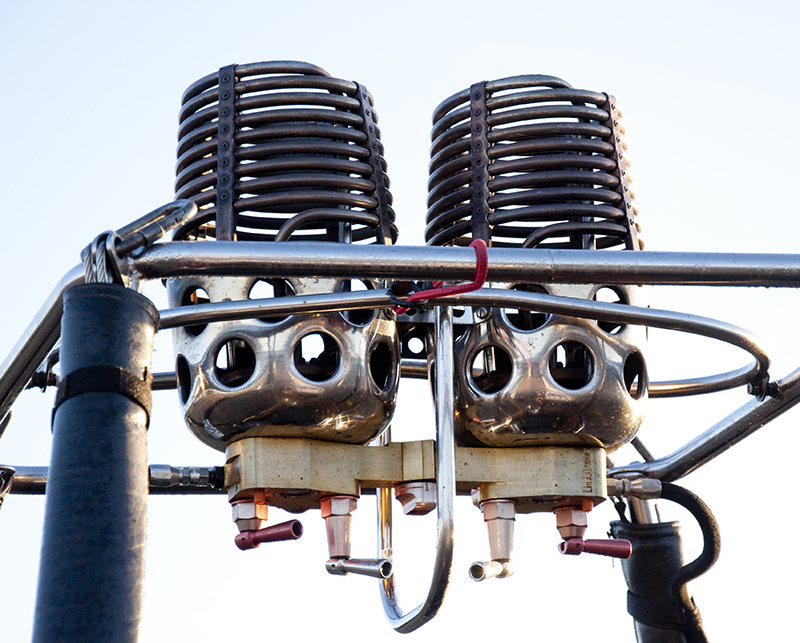Theory of a Hot Air Balloon's Burner.
As a self-admitted pyro, this is my favorite part of a hot air balloon. I mean, who doesn't like controlled fire that you can feel?
The most commonly used gas that is burnt in a hot air balloon burner is propane. The propane flows out of tanks in liquid form to prevent over-cooling of the tank, and to achieve larger flow.
Once the gas has left the tank, it enters a coil of tubing. the gas circulates through this tube, then leaves an orifice at the bottom, allowing a flame to be burnt under the coil.

As the gas flows through the coils, it is vaporized and superheated. this increases its velocity upon mixture with air, promoting a cleaner and larger burn.
This theory can be applied to other hydrocarbon fuels, but it requires a change in surface area and length of heating element along with a change in fuel/air mixing chambers.